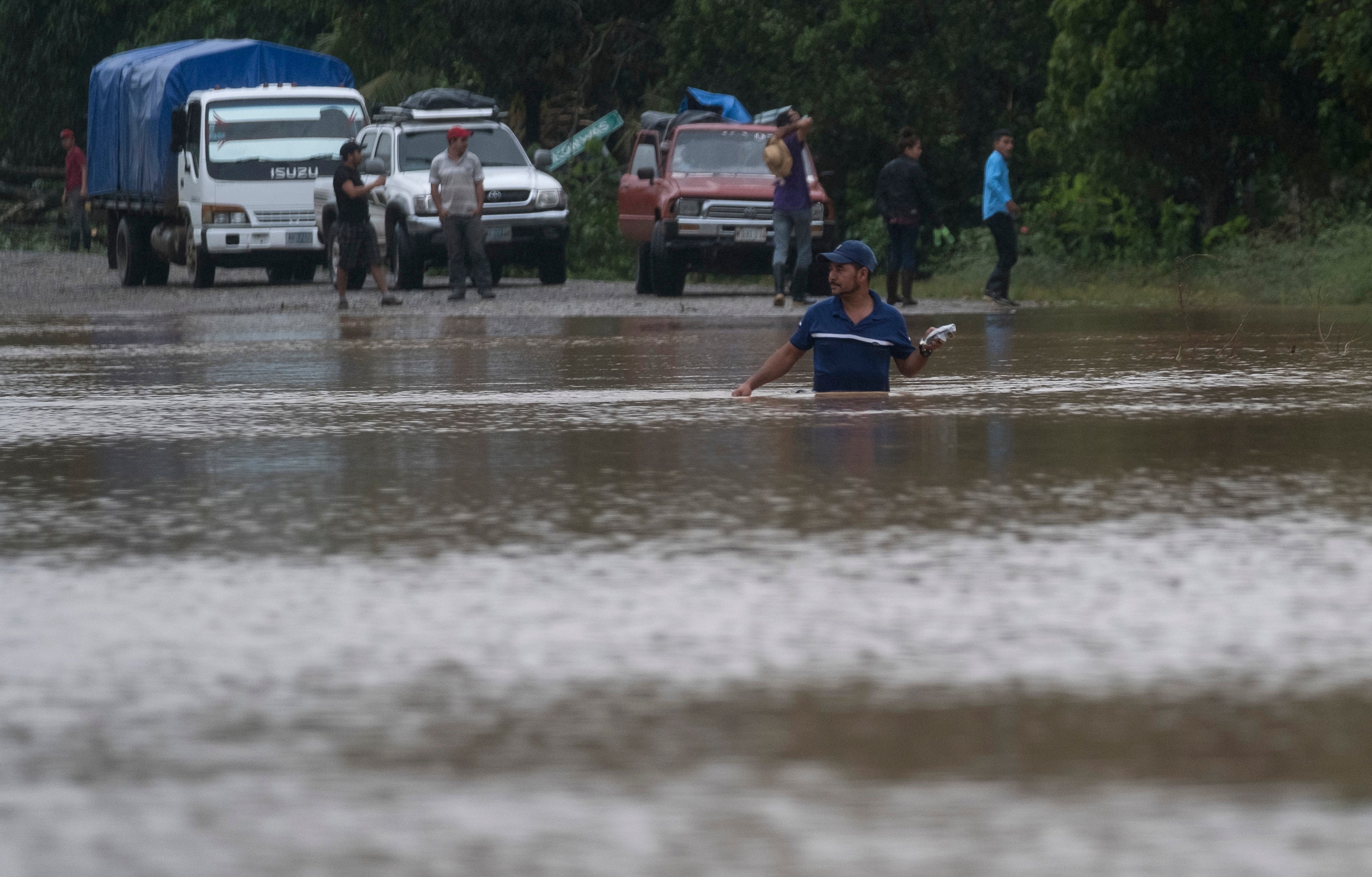Iota threatens second tropical hit for Nicaragua, Honduras
Tropical Storm Iota is brewing in the Caribbean Sea and threatening a second tropical strike for Nicaragua and Honduras

Your support helps us to tell the story
From reproductive rights to climate change to Big Tech, The Independent is on the ground when the story is developing. Whether it's investigating the financials of Elon Musk's pro-Trump PAC or producing our latest documentary, 'The A Word', which shines a light on the American women fighting for reproductive rights, we know how important it is to parse out the facts from the messaging.
At such a critical moment in US history, we need reporters on the ground. Your donation allows us to keep sending journalists to speak to both sides of the story.
The Independent is trusted by Americans across the entire political spectrum. And unlike many other quality news outlets, we choose not to lock Americans out of our reporting and analysis with paywalls. We believe quality journalism should be available to everyone, paid for by those who can afford it.
Your support makes all the difference.Tropical Storm Iota was brewing in the Caribbean Sea early Saturday, threatening a second tropical strike for Nicaragua and Honduras countries recently ransacked by a Category 4 Hurricane Eta.
The National Hurricane Center in Miami said Iota could bring dangerous wind, storm surge and as much as 30 inches (76 centimeters) of rainfall to the two Central American countries, approaching their coasts as early as Monday. The system formed Friday afternoon.
The storm was located early Saturday about 340 miles (545 kilometers) south-southeast of Kingston, Jamaica, and had maximum sustained winds of 40 mph (65 kph). There were no coastal warnings or watches in effect as of Saturday morning. Iota was moving to the west-southwest at 5 mph (7 kph).
Iota could wreak more havoc in a region where people are still grappling with the aftermath of Eta. That system hit Nicaragua last week as a Category 4 hurricane, killing at least 120 people as torrential rains brought flash floods and landslides to parts of Central America and Mexico. Then it meandered across Cuba, the Florida Keys and around the Gulf of Mexico before slogging ashore again near Cedar Key, Florida, and dashing across Florida and the Carolinas.
The Tampa Bay area was buffeted with gusty winds and rain, and there was one U.S. death linked to Eta: In Bradenton Beach, Mark Mixon stepped into his flooded garage as he was laying sandbags around his home Wednesday evening and was electrocuted, said Jacob Saur, director of public safety for Manatee County.
Iota is already a record-setting system, being the 30th named storm of this year’s extraordinarily busy Atlantic hurricane season. Such activity has focused attention on climate change, which scientists say is causing wetter, stronger and more destructive storms.
Eta was the 28th named storm of this year’s hurricane season, tying the 2005 record for named storms. Theta, the 29th, was weakening over the far eastern Atlantic Ocean. It was expected to become a remnant low later Saturday, forecasters said.
___
Frisaro reported from Fort Lauderdale, Florida. Associated Press photographer Lynne Sladky and video reporter Cody Jackson contributed to this report from Pinellas County and AP reporter Michelle Liu contributed from Columbia, S.C.